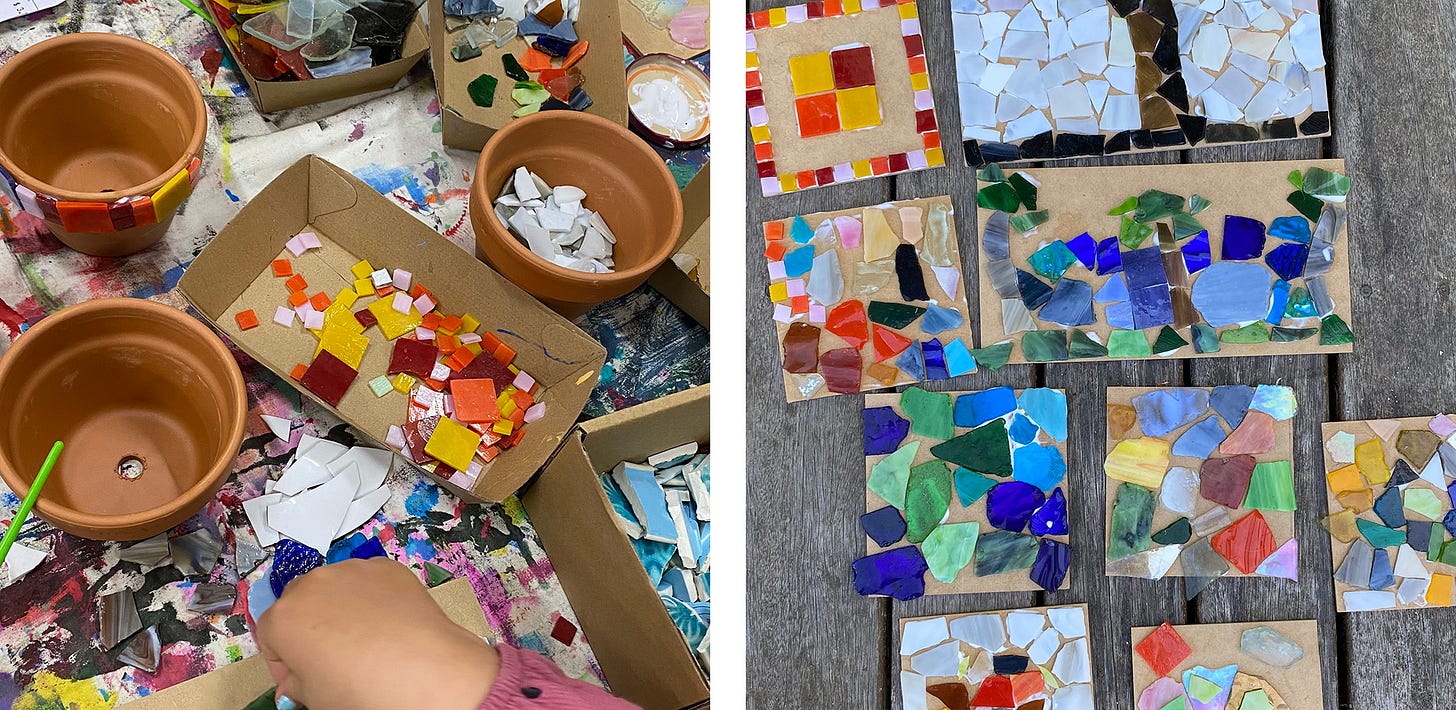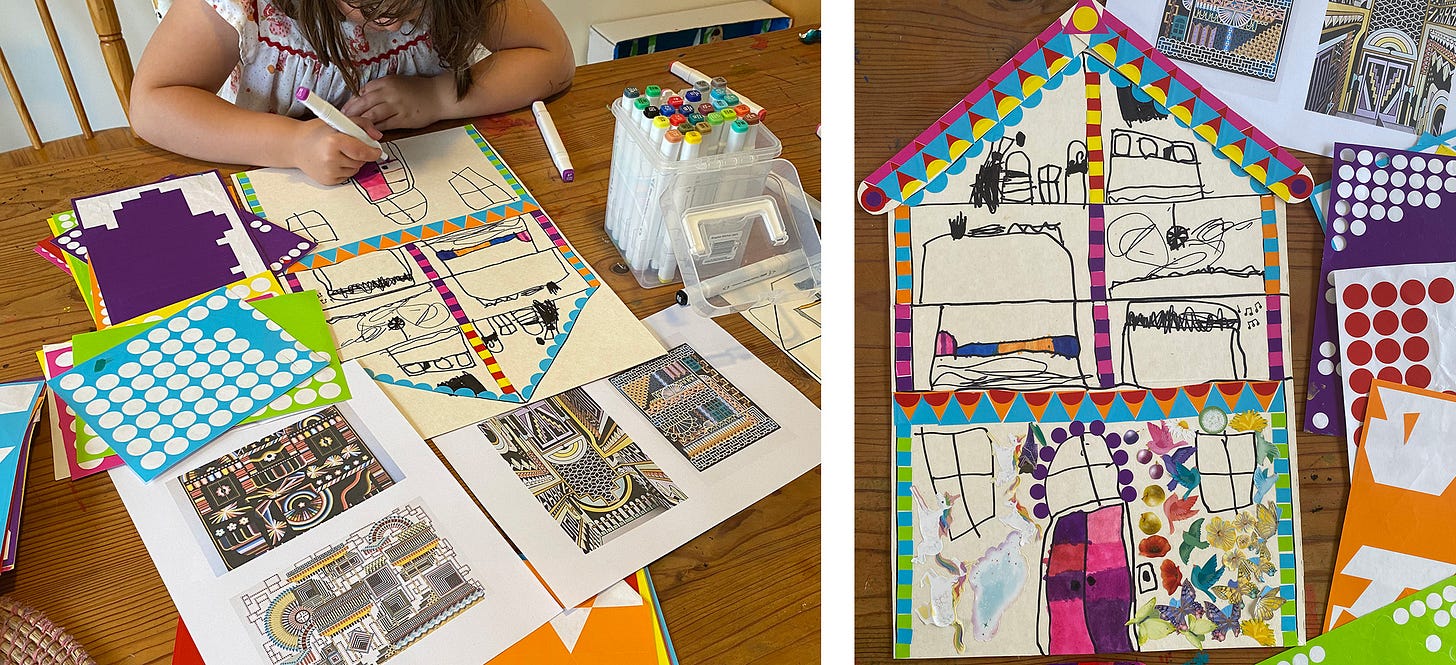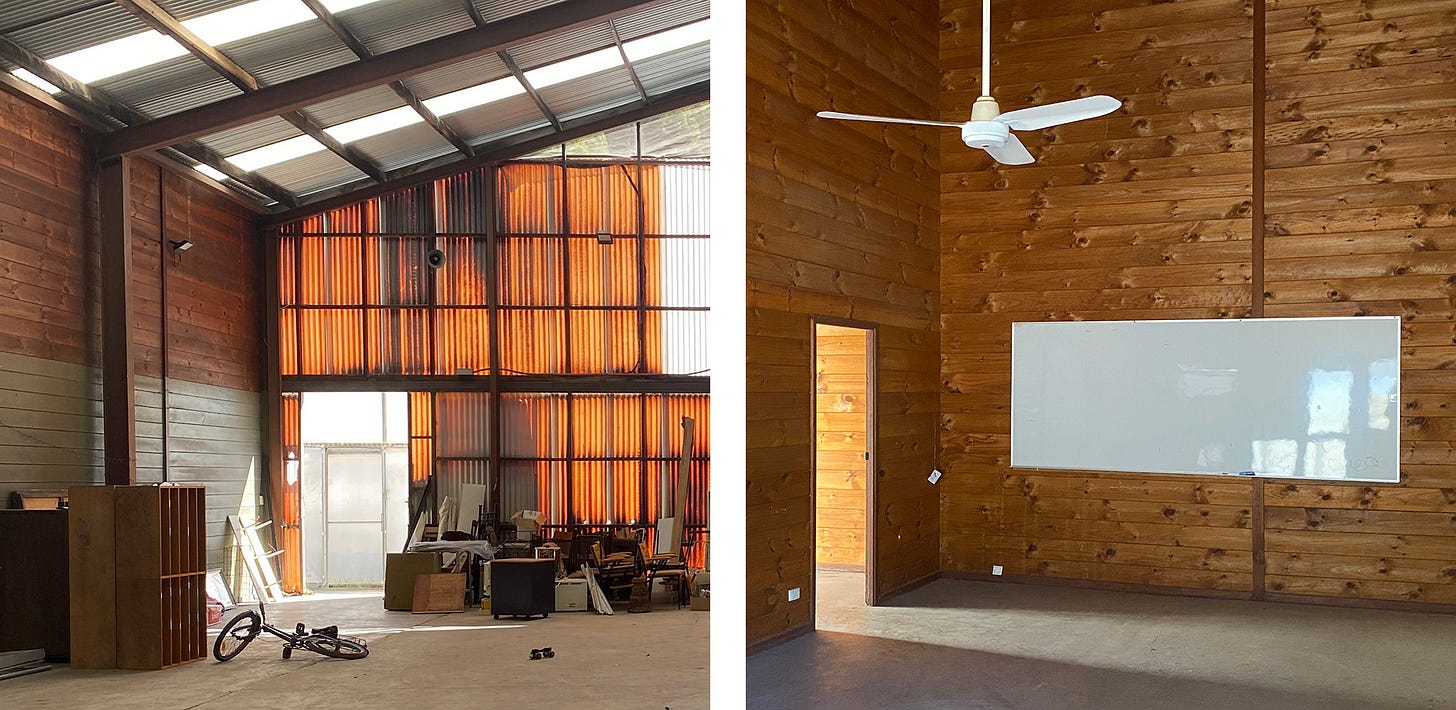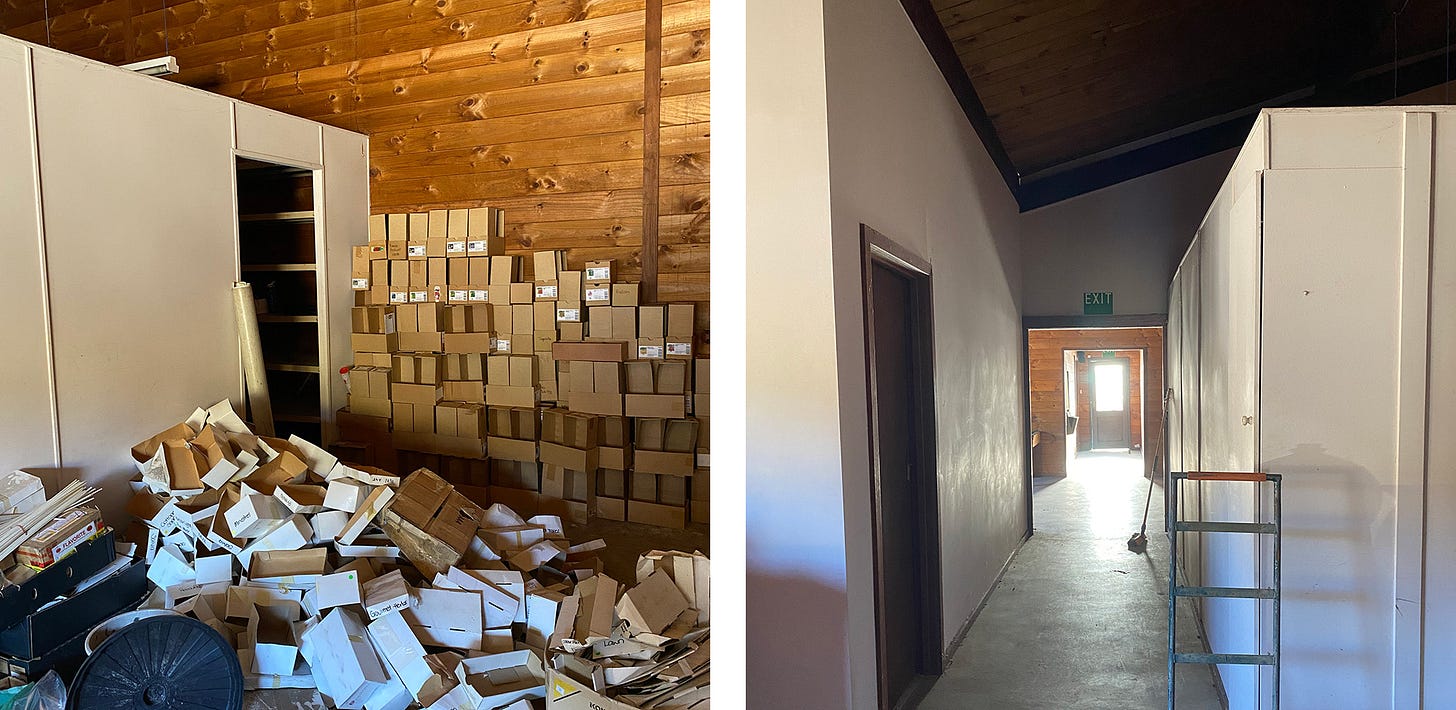In these monthly ‘Creative Community Spaces’ articles I aim to share my journey in organizing creative workshops and fostering community groups. In sharing my own experiences — the triumphs, the challenges, and the setbacks — I hope to inspire others, in some small way, encouraging them to forge connections and establish spaces that nurture our communities for the future.
TOGETHER WE CAN - Building community groups
I’m passionate about building community groups and creative spaces, but I am far from being an expert. As I have mentioned before, I feel deeply unequipped in knowing how to be part of a community. The idea of being both reliant on and supporting others in an interconnected way is somewhere between uncomfortable and scary for me, but I’m finding my way and learning as I go. For almost a year now, I have been collaborating with a group of 8 families to create a home education cooperative. We meet fortnightly at a hired space, where we organise art, craft, cooking and nature play activities together. The children who attend range form 4-11 yrs in age.
Our objective in establishing the co-op was to build an intentional community where both adults and children could mutually inspire and be inspired; a respectful and inclusive environment valuing all our interests and skills. We endeavor to support each other in our home education journeys, cultivating a sense of belonging within group and our wider community. The activities we create are child-led, focusing on free play and exploration, with the adults there to facilitate and support the children’s interests and ideas. We aim to nurture a connection to nature and respect for First Nations culture. Sexism, Racism or Bigotry are not tolerated within the group.
At the inception of the group, these principles were outlined in a statement that I collaboratively crafted with another parent. The intent behind this statement was to convey to incoming families the objectives we aimed to accomplish, our core values, and the ethos guiding the group. I feel, when embarking on the formation of any community based group, anchoring it in shared values and fostering clear communication is a crucial initial stride. While our group caters to home educating families, these foundational principles are universally applicable, whether establishing a food co-op, community garden, climate action group or any other community initiative.
Our group is far from perfect. We have had struggles with communicating and making collaborative decisions. For me, the hardest part, has been working with others. I feel more comfortable either being in control of the group or hiding somewhere in the background. That sticky place in the middle, where all the communication, collaboration and compromise happens is hard. I try to remind myself that it is OK to make mistakes and that I am committed to learning and personal growth.
Drawing from my limited experience, here are a few key elements I feel are a great starting point for cultivating a thriving community group:
Setting your intentions and values for the group right from the beginning.
Create a structure, be it formal or more casual, for making shared decisions. Having an agreed upon process for making group decisions can help make the process easier and mitigate personal disagreements. Recently I have been researching sociocratic decision making to see if this format for consent-based decision making could help our group.
Be open and clear about how people in the group are expected to contribute.
Show up.
Show up.
Show up.
Yep, I reckon showing up consistently is the most important aspect of creating any group!
To those with experience in developing community-based initiatives, I'm eager to hear your insights. What steps do you consider crucial in the establishment of community groups?
IMAGINARY ‘ECSTATIC ARCHITECTURE’ - Inspiring real community spaces.
I wanted to share with you a recent art project that provoked interesting conversation and inspiration for a real-life community space we hope to create. I was recently introduced to the artwork of Edie Fake through an article by Wendy MacNaughton. His vibrant, decorative paintings and murals envision fantastical, and optimistic architectural spaces that he refers to as "ecstatic architecture."
‘Edie Fake’s “ecstatic architecture” triggers us into thinking beyond what IS and helps us start to imagine what COULD BE.’ - Wendy MacNaughton
Each week in her articles, Wendy sets an assignment for her arty GUT (Grown Up Table) group. This time the prompt was to imagine and draw an ‘ecstatic architectural’ space that celebrates your community. After showing my children some of Edie Fake’s artwork, which they loved, we decided to create a drawing of what they imagine a community building for our home education co-op could look like.
This imaginative artistic project sparked many discussions. With great enthusiasm, my children were keen to add elements to the drawing that were important to them, like an art room, music, D&D and board games spaces, a disco room and much more. Gently directing their focus towards the fact that there are also others within our community group, we engaged in discussions about creating a safe and inclusive space for everyone, acknowledging the diverse needs and interests of the group, including those who are neurodivergent, instead of solely focusing on what they personally wanted. We also talked about what would happen if an activity or space you wanted (say a music room) impinged on someone else feeling comfortable within the space (maybe they were sensitive to loud noises) and how we might have discussions to resolve any conflicts whilst considering everyone’s needs.
The artwork they created may just be a simple drawing with stickers on the back of a cereal box, but what it represents is so much more. The most exciting part of this artistic project is that we are currently working towards making this space a reality!
CREATING A SPACE - Cleaning and dreaming
Exciting ventures are on the horizon for us. In the last few weeks we have been working towards a new project. With a group of families, we are building a permanent home education community space. This is only possible due to one very generous family offering a large, unused warehouse and office space they have on their property for our use.
We are currently at the cleaning and dreaming phase. The space has been unused for years, apart from the by the resident mice, and is full of lots of old furniture. We have been working together, with a shared vision, to clear, repair and clean the building.
Next comes the fun part, fitting out the space for use. There are multiple smaller rooms, which our young people have been dreaming up uses for, including a Dungeons and Dragons room, board games and Lego spaces, a disco themed hangout space and much more. There are 2 larger spaces; in one I’m hoping to create an art room and maker space. The other, which includes a kitchen, will be a central community hangout and meeting space. Everyone, including the children, is involved in making their dream space, their ‘ecstatic architecture’ a reality.
Exciting developments will be coming in the next few months. I can’t wait to share with you the story of this new venture as the space evolves!
RESOURCES:
This talk, by Fran from A Life Unschooled, delves into her experience contributing to running a homeschool co-op.
I’m currently looking into taking a course to learn more about consent-based decision making and Sociocracy.
Recently I listened to this podcast episode which was a conversation between Fran at A Life Unschooled and Sara Sadak of Radical Matriarch where they discuss counter-cultural motherhood, community building and our collective responsibility.








Thanks for the shares!! You know my thoughts about this and I totally agree that 50% of it is consistently showing up!!